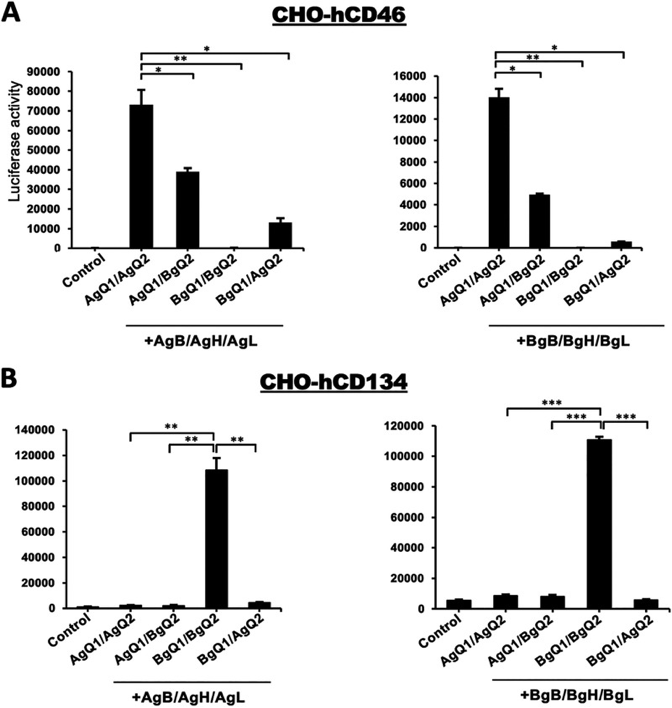The combination of gQ1 and gQ2 tetramer components of both HHV-6A/6B are important for viral propagation, probably by affecting attachment to their different receptors.
Both HHV-6A and HHV-6B have a glycoprotein H tetramer on the envelope consisting of glycoproteins gH/gL/gQ1/gQ2.
Wakata et al. of Kobe University Graduate School of Medicine investigated the necessity and function of each specific glycoprotein component of this envelope tetramer, for both HHV-6A and HHV-6B by swapping in and out each of the four components of the tetramer from each of the two viruses.
The data from these experiments indicates that gQ1/gQ2 from each of the two viruses are important in determining the tetramer’s affinity for their entry receptors, CD46 for HHV-6A (Santoro 1999), and CD134 for HHV-6B (Tang 2015), respectively. It also shows that replacement of gQ1 or gQ2 from one virus into the other impairs binding, as shown in Figure 1.

Figure 1: a) Difference in CD46 activity when replacing HHV-6A gQ proteins with HHV-6B.
b) Difference in CD134 activity when replacing HHV-6B gQ proteins with HHV-6A (note near-complete loss of activity) - Wakata 2021
These meticulous studies continue to dissect the contribution of the difference components of the HHV-6A and HHV-6B glycoprotein H tetramer complex in the biology of the viruses.
Read the full article: Wakata 2021

